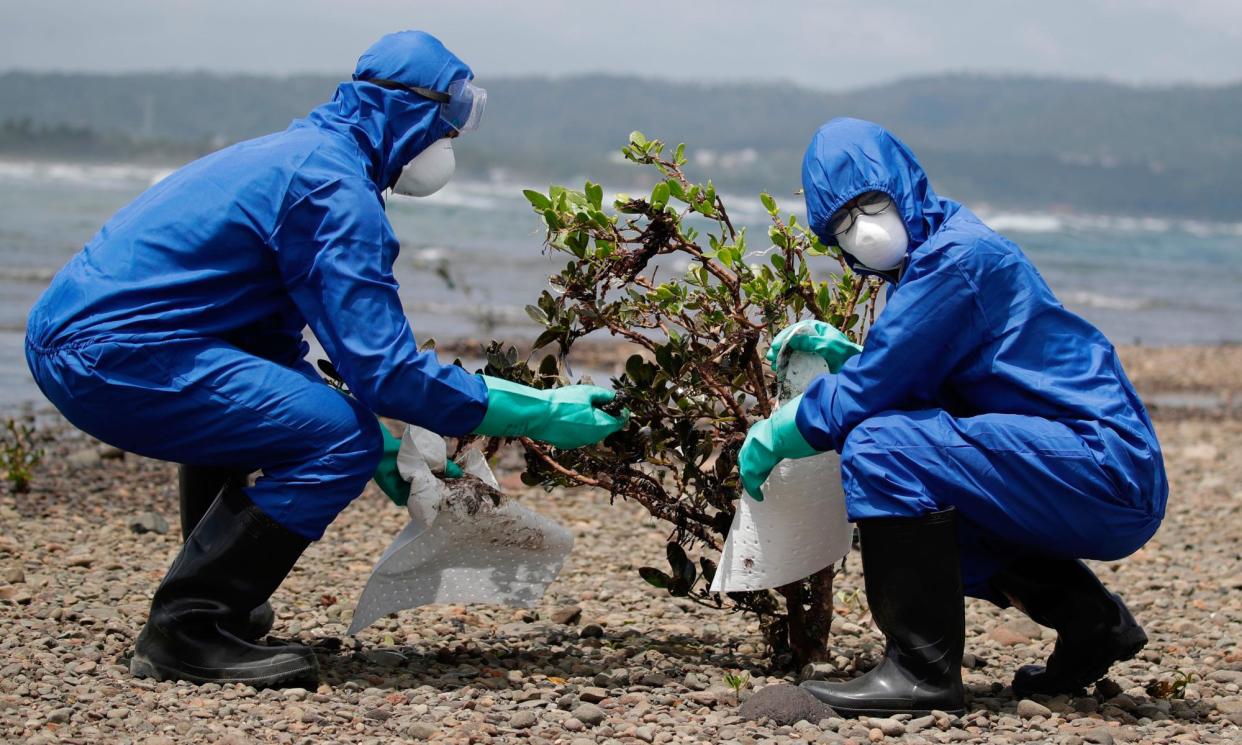Half of world’s mangrove forests are at risk due to human behaviour – study

Half of all the world’s mangrove forests are at risk of collapse, according to the first-ever expert assessment of these crucial ecosystems and carbon stores.
Human behaviour is the primary cause of their decline, according to the analysis by the International Union for Conservation of Nature (IUCN), with mangroves in southern India, Sri Lanka and the Maldives most at risk.
Systems in the South China Sea, central Pacific, and the eastern Coral Triangle around Malaysia, Papua New Guinea and the Philippines were classified as endangered.
Angela Andrade, the chair of the IUCN commission on ecosystem management, said: “Mangrove ecosystems are exceptional in their ability to provide essential services to people, including coastal disaster-risk reduction, carbon storage and sequestration, and support for fisheries. Their loss stands to be disastrous for nature and people across the globe.”
Found across the planet, mangroves include dozens of different species of trees and shrubs along tropical coastlines, which shelter a vast array of biodiversity. They act as nurseries for fish and support mammals as varied as tigers, African wild dogs and sloths.
The ecosystems store a disproportionate amount of carbon for their size, drawing in almost three times the carbon stored by tropical forests of the same size.
About 15% of the world’s coastlines are covered by mangroves, but the study found they are increasingly threatened by rising sea levels, agriculture, developments along coastlines, pollution such as oil spills, and the consequences of dam construction.
Related: Biodiversity loss is biggest driver of infectious disease outbreaks, says study
Prawn farms, coastal development and dams on rivers, which alter the flow of sediment, had all been established as previous causes of loss by researchers. But growing threats from rising sea levels and the climate crisis threaten their survival due to the increased frequency and severity of intense storms.
Researchers used the IUCN’s tools for assessing the risk to ecosystems – akin to its red list, used for calculating the extinction risk for species – to carry out the research, which involved more than 250 experts around the world.
“The red list of ecosystems provides clear pathways on how we can reverse mangroves loss and protect these delicate ecosystems for the future, helping in turn to safeguard biodiversity, tackle the effects of climate change and support the realisation of the Global Biodiversity Framework,” Andrade said.
Mangroves in Hawaii and south-east Polynesia were not included in the assessment as they are not naturally part of the ecosystems.
Find more age of extinction coverage here, and follow biodiversity reporters Phoebe Weston and Patrick Greenfield on X for all the latest news and features

 Yahoo News
Yahoo News 
